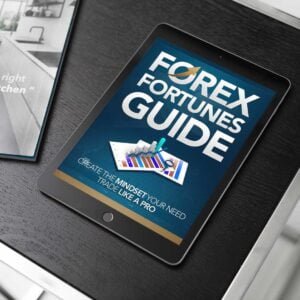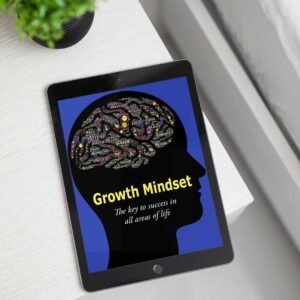In today’s financial landscape, building a successful investment portfolio is akin to navigating a wild ocean. It demands not just the knowledge of the markets but a deep understanding of the principles that govern long-term wealth creation. Drawing inspiration from seminal works such as “100-Baggers” by Christopher Mayer, “How to Pick Quality Shares” by Phil Oakley, “The Art of Execution” by Lee Freeman-Shor, “Investing for Growth” by Terry Smith, and “The Education of a Value Investor” by Guy Spier, this comprehensive guide aims to arm you with the formidable strategies and insights you need to construct a portfolio that not only withstands the test of time but flourishes.
Understanding the Essence of High-Quality Shares
Oakley’s exploration into picking quality shares sheds light on the cornerstone of any robust portfolio: investing in high-quality companies. These are businesses with durable competitive advantages, robust balance sheets, and the ability to generate significant cash flow. The path to identifying these jewels in the rough begins with meticulous research into their financial health, understanding their business models, and evaluating their growth prospects. Remember, the quality of the shares you hold directly impacts your portfolio’s performance during market downturns and its potential for exponential growth. Check out the most sought after investments here.
Lessons from the Pursuit of 100-Baggers

A 100-bagger is a stock that returns $100 for every $1 invested, a concept popularized by Christopher Mayer in his enlightening book. Achieving such a feat is the dream of every investor, and while it may seem like a shot in the dark, Mayer’s research into past 100-baggers reveals a common thread: these companies had ample room to grow, operated in expanding industries, and, most importantly, were held for the long term. The key lesson here is the power of patience and the importance of allowing compound interest and business growth to work their magic over time.
The Art of Execution: Investing with Precision
Freeman-Shor’s “The Art of Execution” emphasizes the significance of how you act after making an investment. Freeman-Shor categorizes investors into several archetypes based on their actions during market fluctuations, highlighting the successes and failures of each. The golden takeaway is the importance of cutting losses early while letting winners run, a discipline that distinguishes successful investors from the rest. Effective execution is about making calculated decisions rather than emotional reactions, a skill that when mastered, can dramatically enhance your portfolio’s performance. Check out how to beat the market averages below.
Charting Growth: The Blueprint for Long-term Success
Smith’s insights into “Investing for Growth” focus on the principle of investing in companies capable of sustaining high rates of return on capital employed (ROCE) without the need for excessive leverage. These companies usually have scalable business models, allowing them to grow without substantial reinvestment. Smith advocates for a focus on organic growth, operational efficiency, and the reinvestment of earnings into high-return projects. By adhering to these principles, you align your portfolio with businesses that are not just surviving but thriving and contributing significantly to your portfolio’s upward trajectory.
The Philosophy of Value Investing: A Foundation of Principles
Drawing lessons from “The Education of a Value Investor” by Guy Spier, we’re reminded that investing is not just a series of transactions but a reflection of our values and understanding. Spier’s transformation from a Gordon Gekko wannabe into a principled value investor underlines the importance of humility, learning from mistakes, and the ethos of value investing – buying stocks at a discount to their inherent value with a margin of safety. It’s about investing with conviction in businesses you understand and trust in their long-term value proposition.
Building a Portfolio: The Strategic Blueprint

With these insights and strategies in hand, we can now outline a roadmap for building a successful investment portfolio:
Foundation of Quality: Prioritize stocks that demonstrate financial stability, competitive advantages, and the potential for sustained growth. In today’s digital age, having the right tools and resources at your fingertips is essential for making informed investment decisions. The world of investing has become increasingly accessible, thanks to a wealth of online resources designed to help both beginners and seasoned investors navigate the complexities of the stock market. Among these, the article 5 Best Free Stock Analysis and Research Tools Online stands out as a treasure trove of valuable information. It provides insights into a selection of top-tier, free tools that offer everything from in-depth market analysis to comprehensive research options.
Patience and Compound Growth: Embrace the long-term perspective, understanding that true wealth creation takes time and the magic of compounding is a formidable ally.
Effective Execution: Develop the discipline to act decisively, cutting losses when necessary and holding onto winners to fully realize their growth potential. Observing and interpreting market trends is crucial, as these insights help anticipate and leverage future opportunities, setting the stage for informed decision-making.
Growth Mindset: Align your investments with companies that have scalable models and are capable of growing without the constant need for reinvestment.
Value Investing Principles: Stay true to the principles of value investing, focusing on companies trading at a discount to their intrinsic value and possessing a margin of safety.
Diversification: While having a focus is beneficial, ensure that your bets are spread across different sectors and industries to mitigate risks. With risk management, strategies specifically tailored to accommodate different life stages are indispensable. Such personalized approaches ensure that investors can navigate through various financial milestones with confidence, safeguarding their wealth against market uncertainties.
Continuous Learning and Adaptation: The market is ever-changing, and so should your strategies. Stay informed, learn from your decisions, and iterate your approach.
Discipline and Emotional Control: Perhaps the hardest lesson is mastering your emotions. The market will test your resolve, but staying disciplined in your approach will lead to long-term success.
Pro Tip – Check out an up to date report on Insider buying & selling here.
Incorporating Stoic Philosophy into Investment Strategies
In the pursuit of portfolio optimization, introducing a philosophical dimension can significantly deepen an investor’s approach. Stoic philosophy, with its emphasis on logic, ethics, and focusing on elements within our control while accepting those beyond it, offers valuable lessons for the modern investor. This perspective resonates profoundly, especially in managing emotional responses to market fluctuations. Stoicism teaches the merit of action, acceptance, and the importance of maintaining perspective, principles that can be directly applied to investment strategies. For instance, focusing on long-term investment objectives rather than reacting to short-term market movements embodies the Stoic virtue of action guided by reason.
This integration of Stoic wisdom into investment practice provides investors with a framework for developing resilience and discipline. It champions the idea that successful investing is not solely about mastering market dynamics but also about mastering one’s reactions and decisions, advocating for a balanced approach to both financial planning and personal growth.
Embracing the Lessons of Psychology: A Pillar of Successful Investing
As we sculpt our path to becoming adept investors, there’s an invaluable lesson to be gleaned from one of psychology’s most insightful texts, “Thinking, Fast and Slow” by Daniel Kahneman. Kahneman’s exploration into the dual-process model of the human mind — the impulsive, automatic ‘System 1’ and the more deliberate, analytical ‘System 2’ — sheds light on the cognitive biases and errors that often ensnare investors. See here for in in depth explanation of how our brain has two operating systems. Which he called system 1 and system 2. These are the differences between the two systems of our brain and an important factor in our investment mindsets.
The Psychological Edge in Investing
At its core, successful investing is as much about mastering our own minds as it is about assessing the markets. Kahneman’s work teaches us the importance of slowing down our thought processes, engaging ‘System 2’ to critically evaluate investment decisions rather than succumbing to the knee-jerk reactions of ‘System 1’. This psychological self-awareness empowers investors to resist the allure of market hype, navigate the fears of volatility, and make decisions grounded in reason and research rather than emotion.
Overcoming Biases for Better Decision Making
Recognizing and overcoming biases such as overconfidence, confirmation bias, and loss aversion — all explored in depth in “Thinking, Fast and Slow” — can significantly enhance investment judgement. By understanding that these biases influence our decisions, we can adopt strategies to mitigate their effects, such as setting pre-determined rules for buying and selling, diversifying investments to spread risk, and consistently reviewing and reflecting on investment decisions to learn from past outcomes.
Integrating Psychological Insights into Your Investment Portfolio

Engage in Reflective Thinking: Before making any investment decisions, engage in a thorough, reflective process. Take the time to analyze the company’s fundamentals, understand its competitive edge, and assess the market’s current sentiment. Check the Fear and Greed Index here.
Develop a Mindful Investment Practice: Cultivate mindfulness in your investment practice by remaining present and focused. This means not getting swayed by daily market fluctuations or the noise of the news cycle, but rather maintaining a long-term perspective.
Set Emotional Guardrails: Establish clear investment criteria and stick to them. This disciplined approach helps avoid making impulsive decisions based on short-term market movements or emotional reactions.
Practice Patience and Resilience: Embrace the virtues of patience and resilience, recognizing that the path to wealth creation is a marathon, not a sprint. Understand that markets will fluctuate, but a well-considered investment philosophy will endure.
Seek Contrarian Perspectives: Actively seek out information and viewpoints that challenge your assumptions. This healthy practice of considering opposing views can safeguard against confirmation bias and foster a more rounded and robust investment strategy.
By intertwining the profound psychological insights from “Thinking, Fast and Slow” with the strategic acumen gleaned from the investment classics, we forge not just a path to financial success but a journey of personal growth and understanding. It underscores the pivotal role of psychology in investment, reminding us that the markets are not just a playground of numbers and trends, but a mirror reflecting our collective hopes, fears, and aspirations. In harnessing the power of our minds, guided by the wisdom of psychology and the principles of successful investing, we unlock the ultimate key to building a resilient, thriving portfolio.
Building a successful portfolio is not just about selecting the right stocks but embodying the principles of patience, quality, growth, and value investing. It demands continuous learning, discipline, and the courage to stick to your convictions, even in the face of market volatility. By leveraging the timeless lessons from the masters of investing, you’re not just investing in stocks – you’re investing in a philosophy of growth, value, and resilience.
Welcome to the path of becoming not just a successful investor, but a wise one. Below, you can test your knowledge with our Finance quiz.
Disclaimer: The information provided here is for educational purposes only. It does not constitute investment advice or a guarantee of performance. Investing involves risks, including the possible loss of capital. Seek advice from financial and tax professionals tailored to your financial circumstances and goals.















